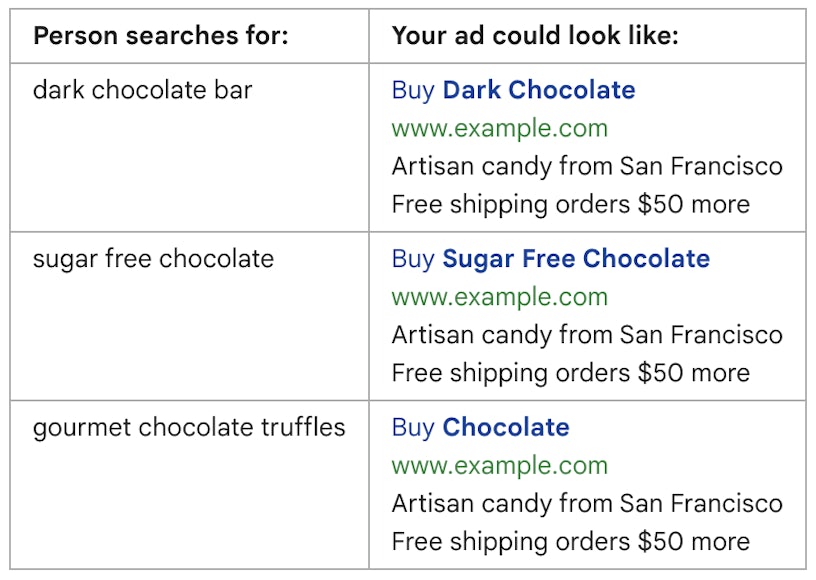Advertising (and digital marketing in particular) is an ever-evolving practice. Whether it’s new campaign types, auditing features or more, we can often lose sight of some of the more basic but crucial concepts of our ads.
Ad copy is one of these crucial concepts of digital marketing. It is a core part of any ad, but some marketers can often underestimate the importance of it. After all, it is one of the first, visual elements a potential target audience sees, and will help to form their first impressions on whether the ad is relevant to what they are looking for.
With this in mind, this blog will cover some of the best practices to follow when writing ad copy, and provide tips on how to ensure that your ads are conveying your desired message to customers in the most efficient and effective way possible.
NOTE: This post has been updated for 2024 👍
Aligning messaging with your brand
Ensuring your messaging in ads is aligned with your brand is key to creating a cohesive marketing strategy. Matching your tone of voice in ad copy to the content on your site will create a more consistent user experience. Furthermore, this will solidify your brand and the value proposition of your product or service. For example, if you offer solutions for customers with a tight budget – be sure to include messages that convey that you offer the lowest prices or best value for money, if you are a premium brand, focus on the exquisite details that set you apart from the rest and let your customers know about the quality they can expect from you.
Your presence on Google Ads can help to put these unique selling points (USPs) and your brand in front of users who are already searching for your product or service. Aligning your messaging here helps grab the attention of users who recall seeing one of your ads on a social media platform or from other marketing activities.
Mixing your messaging with calls-to-action (CTAs) and other trust signals, such as reviews on recognised sites like Trustpilot or Feefo, will drive users to make meaningful conversions on your site and highlight why your brand should continue to be part of their purchase decision-making process.
One technique for this would be to integrate dynamic review extensions which take data from your business’ account on a credible review site, such as Trustpilot, Feefo or Yelp, to showcase that your customers are left satisfied with your brand. You could also introduce keyword or location modifiers to ensure users are seeing messaging which matches their queries and nearby towns or cities to present your brand as a convenient solution if this is appropriate for your business.


Quick tips:
- Utilise dynamic review extensions in your ad copy
- Consider matching your messaging depending on the customer’s keyword search & location
Dominating the SERP & leveraging machine learning
Over the last few years, Google has made huge pushes in promoting automation and machine learning across its services, and upgrading how its platform applies these – and this includes how ads are created too.
One of our top tips to leverage these capabilities is to make use of the space that Google gives to you. Google operates their ads by matching the most relevant copy you have given it to the most relevant consumer. If a user is searching for a specific sale your brand is running, and you’ve provided a set of headlines and descriptions mentioning it, these will be the most likely to show.
By ensuring you’ve used up all of your headline and description slots, you are not only diversifying your copy but are also giving the platform more wiggle room to engage a wider and more relevant audience; the more engaged a user is with your ad, the more likely they are to follow up on it and click through to your site. Furthermore, ensure that you are using as much of the character limit as you possibly can, as this will help to fill up more space when your ad shows, keeping your brand front of mind with users. Typically the limit is 30 characters for headlines and 90 characters for descriptions, although some ad types vary.
So now you’ve filled up all of your headline slots with copy fully aligned to your brand’s image, tone and offerings – what next?
Some advertisers may feel daunted by having a large section of headlines and descriptions, making them feel that copy mentioning specific USPs could be lost in the crowd. This may then tempt them to pin headlines which you feel are important to ensure the viewers see this.
Whilst on paper this may seem like the best approach, you’re consequently harming the machine learning process you’ve worked so hard to improve. So much so, that pinning even just one of your headlines may reduce up to 93% of all possible ad copy combinations Google can alternate between! Don’t believe us? Check out the theory behind this here!
Ultimately, by following these tips you will also be increasing another metric within the Google Ads platform: your ad strength. This score will help to highlight how well your copy is following Google’s best practices for optimal performance, based on relevant ad copy, user experience and how you bid on keywords. These are the key components which determine your ad rank when it comes to Google’s ad auctions and will contribute to the performance of your campaigns.
Unifying your messaging across your marketing plan
Unifying messaging across your channels is a great way to maximise your ads and take advantage of any brand-building activity that has already been carried out. This can be taglines which your customers resonate with or CTAs which are proven to convert better for your business – this isn’t to say never test anything new, but we don’t need to reinvent the wheel!
A great place to start might be looking at campaigns on social media, email marketing or meta descriptions on your organic listings. Utilising your pre-existing content can give your ads a head start, particularly if you know certain messaging has performed well with your target audience already – as well as being a good time saver.
Focusing on performance when you approach creating your PPC ads will ensure your decision-making process is focused on the elements which have the largest opportunity for growth, rather than looking to extract even more out of your already best-performing assets. It can be easy to fall into the trap of trying to create 15 brand-new headlines and wasting resources when this can be avoided!
Some messaging won’t be as effective on your PPC ads as it is on your email campaigns and that is to be expected because users on your mailing list are already familiar with your brand and have engaged with your digital presence. However, this is a great place to start if you are just creating a new campaign for your brand and looking for inspiration. These headlines can always be edited at a later date to find the best-performing combinations and variants of ad copy. Remember to always be testing new copy in your ads to find the messages which resonate with your audience and to maximise your performance.
Conclusion
To summarise, having a coherent and consistent message in your ads will help you to connect with your target audience. Leveraging machine learning and your own first-party data will help you take your ads to the next level, maximising your ROI across your PPC campaigns. Utilise all of the tools available to you in the various search engine marketing platforms, such as Google Ads and Microsoft Ads, to dominate search result pages, highlight the USPs of your product or service and showcase the trust signals which will keep users coming back for more!
If you want to learn more about PPC check out our other blog content here or reach out for specialist support on your digital marketing strategy!



